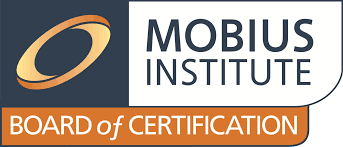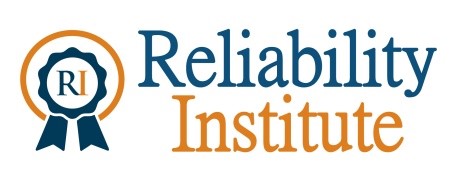MS400 Asset Reliability Practitioner [ARP-L] Reliability Leader
The Asset Reliability Practitioner [ARP-L] “RELIABILITY PROGRAM LEADER” course is intended for those who have taken the lead role in the reliability and performance improvement program. Great responsibility comes with this great opportunity, and the aim of this course is to set you up for success. The emphasis on this course is how to generate business value, develop and implement a strategy, and create the right culture, although we do summarize the technical elements.
Description
Introduction
- A successful implementation
- Why do some reliability programs fail to deliver?
- A summary of asset reliability transformation
- A summary of each stage in the implementation process & asset life-cycle
- How asset reliability relates to asset management and ISO 55000
- Understanding the key implementation phase
The Economics of Reliability
- Introduction to financial fundamentals
- Financial measurements - return on investment, opportunity cost, net present value, the time value of money, discounted cash flow, internal rate of return, hurdle rate, discounted payback period and cost of capital
- Financial performance
- Economic value added
The Value of Reliability
- What is the value of our “reliability improvement” initiative?
- Business Process Review
- Assessing the current state
- Constraints, Risks, Performance and opportunities
- Cost and Waste reduction
- Pilot projects to prove the benefits
- Setting targets & the business case
- Getting management support and approval
Strategy
- Introduction to the organisation chart
- Steering commvsion
- HR Support
- Implementation strategy & tactics
- The roll out
- Understanding failure
- What is an asset strategy?
- Typical outcomes
- RCM, FMEA & PMO
- Using data to drive decisions
The Psychology of Reliability
- Why this is important
- How observant are we really?
- Do we make logical decisions?
- Cognitive biases
- How money affects us
- Influence and peer pressure
- Free and Cognitive dissonance
- Motivational factors
Human Error and Performance Management
- How much of a problem is human error?
- Human performance
- Types of errors
- Error management
- Assessing the likelihood of human error
Culture Change
- Why is it necessary to change the culture?
- Culture and people's personalities
- How does culture change?
- How to plan to change the culture
People Management
- Leadership
- Awareness & buy-in
- Rolls & Responsibilities (RACI)
- Skills and knowledge audit
- Training, certification & Skills
- Employee engagement in problem solving
- Co-operation between departments
- Communicating achievements
Control
- Co-operation between operations & maintenance
- Prioritizing - Pareto & bad actors
- Basic CMMS
- Basic documentation & master asset list
- Preventive maintenance optimisation
- Planning & scheduling • Spares management
- Basic Care - lubrication and cleanliness
- Installing with precision
- Starting with basic condition monitoring
- 5S in the workshop
Acquire
- Lowest lifecycle costs
- Project management
- Design, procure and transport for reliability
- Acceptance testing
Discipline
- Effective CMMS or EAM
- Documentation & standardisation
- Work management
- Spares and storeroom management
Care
- Lubrication management
- Maintaining equipment clean, cool, smooth and fastened correctly
- Caring for spares
- Operating with standard operating procedures and within integrity operating windows
- Operator asset care
Analytics
- Review financial performance & targets
- Program performance
- Measure & review KPI's
- Reliability & consequences
- Asset Health (CBM) monitoring and inspections
- Production performance monitoring
- Risk based inspections, NDT and hidden failure finding tasks
- AI, IIoT, machine learning and Industry 4.0
End of Life
- Root Cause Analysis techniques - 5Ys, FTA, Cause Tree, etc.
- Human considerations and RCA
- FRACAS and other RCA action management systems
- Dispose of assets
Optimize
- Review the business process
- Improve the asset reliability strategy
- Improve the implementation strategy
- Further reliability & production improvements
Get Certified!
The ARP course structure is modelled on the ISO 18436 standards with topics mapped to ISO 55000. The optional Certification Exam is provided by Mobius Institute Board of Certification, (MIBoC) which is ISO/IEC 17024 accredited. Students who meet the experience requirements, complete the course and pass the examination will become certified the highest recognised certification in Reliability available anywhere

Training Partner
SKF delivers the training in collaboration with the Reliability Institute of Australia.

Key Learning Outcomes
- Overview of the implementation strategy
- Establishing the economic value that can be achieved
- Developing the strategy
- Understanding motivation, error and human psychology
- Assessing workplace culture and change management
- Leadership, buy-in and employee engagement
- Discipline, control and standards in maintenance and operations
- Caring for equipment and spares
- Acquiring for lowest life cycle costs and reliability
- Asset Health (CBM) monitoring and inspections
- Using analytics for decision making, review and improvement
- Optimizing the program and improving the strategy
Recommended Pre-Study
On-line videos of the course are available to students to allow for study prior to attending classroom course and exam.
Who Should Attend
- Reliability Engineers
- Reliability Team Leaders
- Reliability Managers